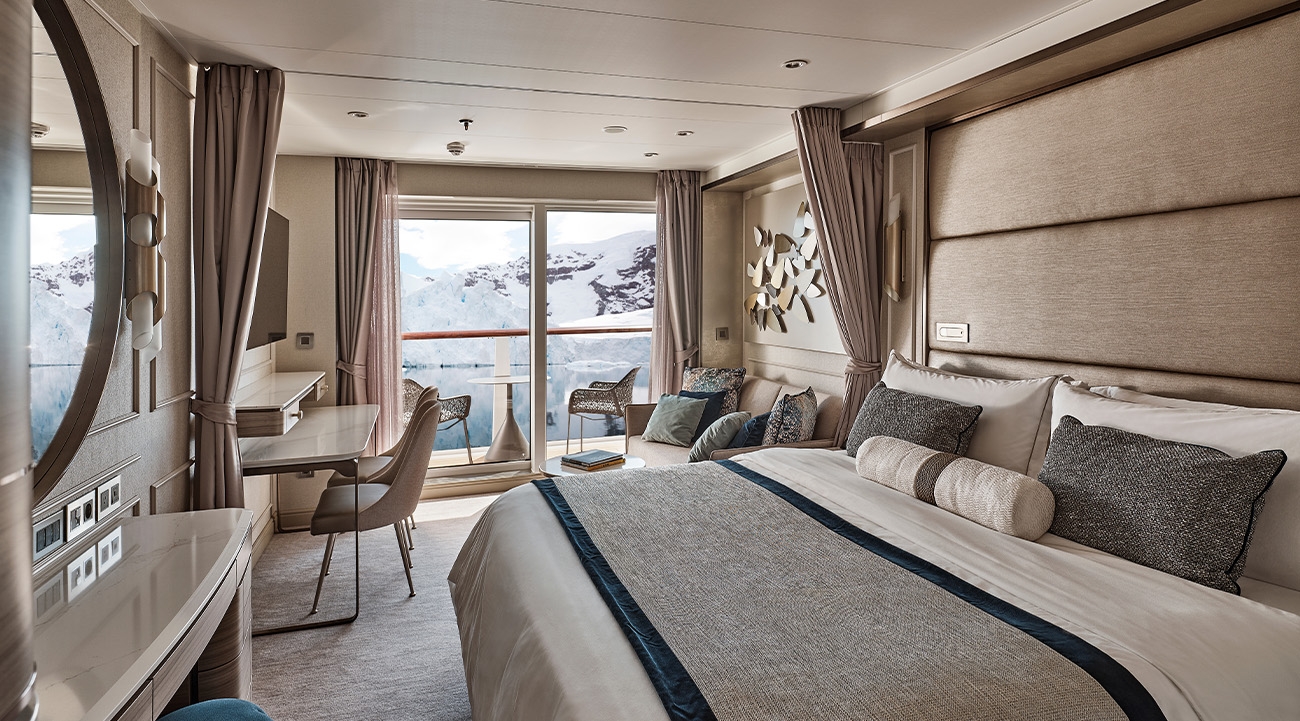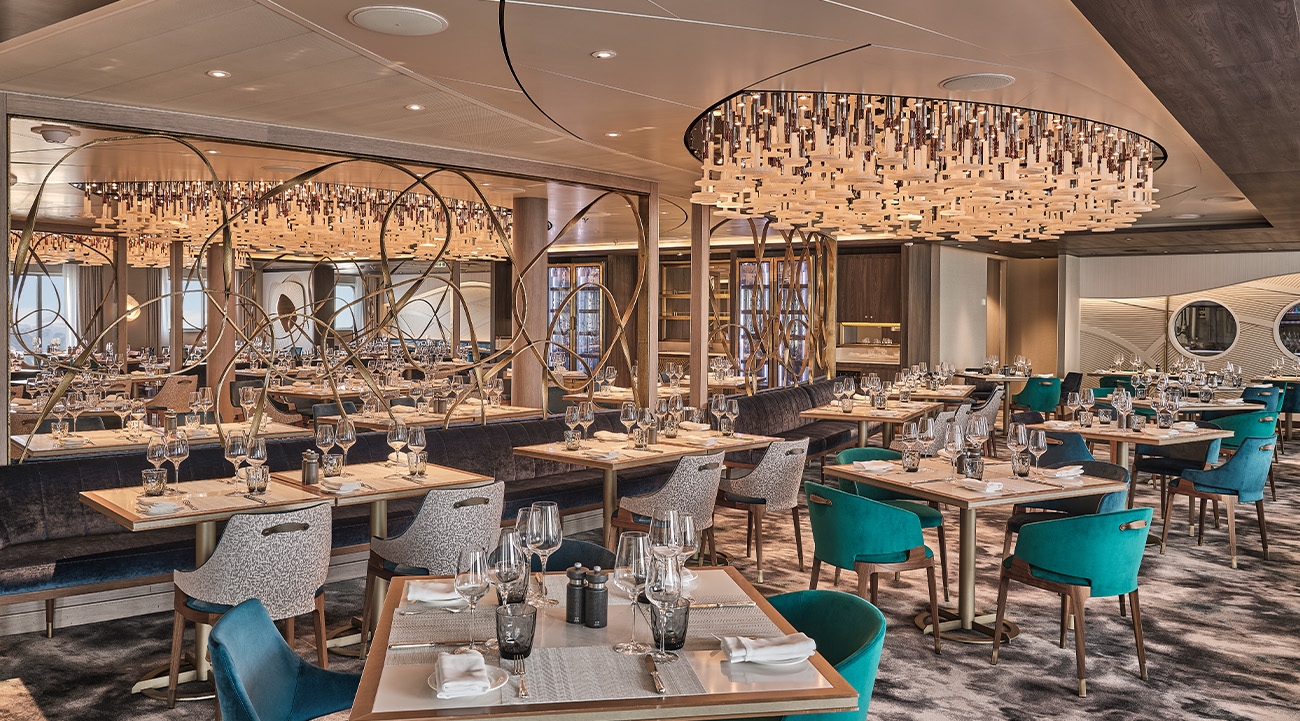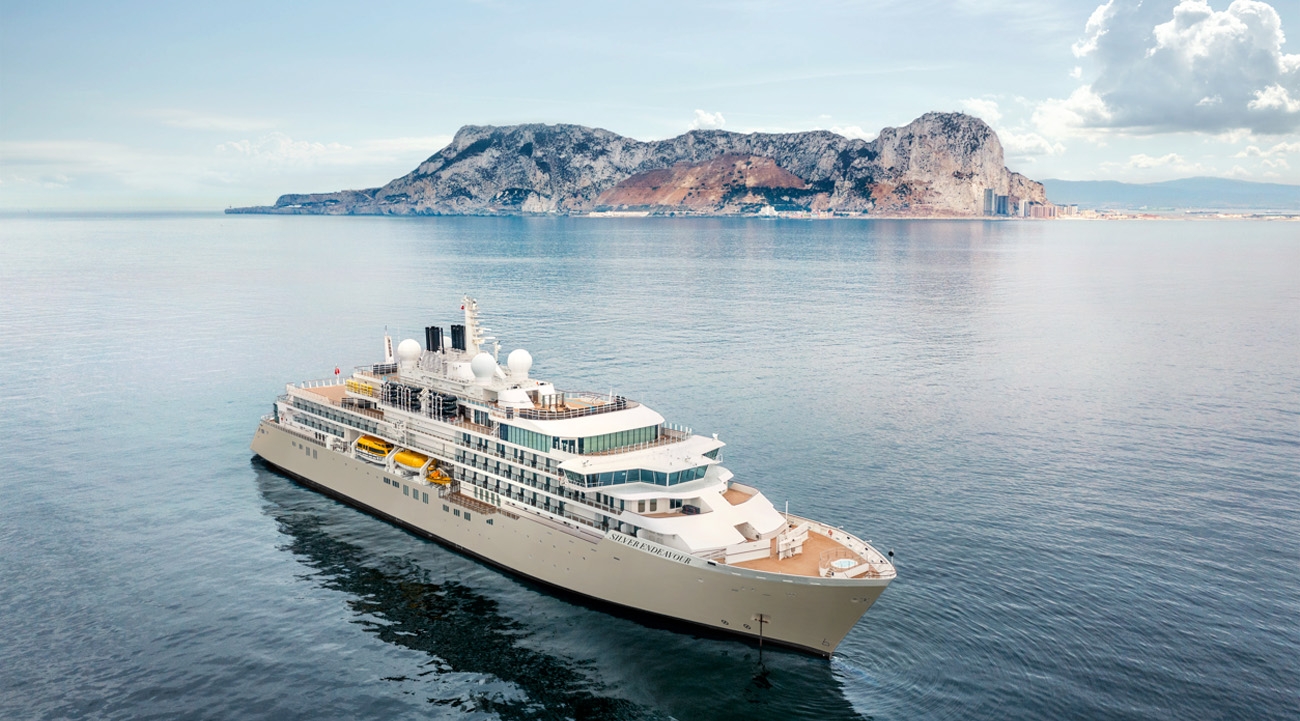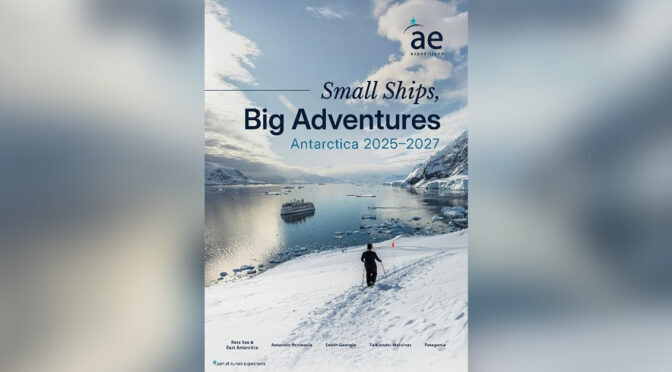In Focus: The rise of luxury expedition cruising
The cruise industry is in the midst of an impressive post-pandemic comeback – and certain segments are performing exceptionally well. One of those is luxury expedition cruise, for which both product and appetite has exploded. A combination of a rise in demand for smaller ships and once-in-a-lifetime experiences, coupled with a growing number of luxury lines wanting a slice of the expedition segment, has meant the market is advancing at an unprecedented rate.
The appeal isn’t hard to comprehend – for many, visiting some of the world’s most far-flung destinations while still enjoying their creature comforts is the epitome of a luxury travel experience – and the benefits can be extremely lucrative for agents who get it right.
Increasing choice
The past two years have given way to considerable numbers of new high-end expedition vessels offering the latest in sustainability, design and exploration capabilities. Last month, both Silversea and Seabourn named new expedition ships in Antarctica. For the former, it was the christening of the 200-passenger Silver Endeavour, which operated briefly under Crystal Cruises in 2019 before being bought by Silversea.
The PC6 polar-class vessel will be used for the line’s fly-cruises to the continent, which allow guests to bypass the notorious Drake Passage. The launch comes nine months after Silversea unveiled its first destination-specific ship, Silver Origin, custom-built to sail the Galápagos. November also saw the naming of Seabourn’s first purpose-built expedition ship, Seabourn Venture, which took place four months after the vessel officially launched to guests.
The 264-passenger ship features an ice-strengthened hull and all the water ‘toys’ an explorer might require, including 24 Zodiacs, eight double sea kayaks and two six-person submersibles – all bolstered by a 26-strong expedition team. The ships come hot on the heels of last year’s entrants to the expedition market, which include Ponant’s Le Commandant Charcot – reportedly the first luxury hybrid electric polar exploration ship powered by liquified natural gas – and Ultramarine, Quark Expeditions’ first owned new-build, which features two twin-engine helicopters, two heliports and 20 Zodiacs.
And product is only set to expand. Next year, Seabourn Venture’s sister ship, Seabourn Pursuit, will enter service alongside Scenic Group’s second ‘discovery yacht’, Scenic Eclipse II.


Agent opportunity
Naturally, enhanced product has prompted a healthy hike in consumer demand. Mundy Cruising’s managing director Edwina Lonsdale said luxury expedition cruise was performing “extraordinarily well”, with bookings up 39% this year compared with 2019. “This is a huge growth opportunity for us, and the reasons are threefold,” she says.
“First, there has been a growth in capacity with conversions and new-builds. Second, in preparation for that growth, we’ve invested heavily in our website, digital and print marketing and staff training, to enable us to sell expedition with confidence. Third, the post-Covid demand for iconic holidays, as well as the ‘do it now’ urgency of the market, have resulted in many interested parties taking the plunge and going ahead with bookings.”
In October, Designer Travel partnered with Polar Routes and Latin Routes to spotlight expedition cruise as part of its Cruise Designers education programme, which aims to boost cruise sales among its homeworkers (see box). Managing director Amanda Matthews is braced for more expedition demand.
“Since Covid, a lot of people are ticking off wish-list opportunities, so it’s definitely on the up for those looking for something more than the norm,” she says. Testament to the success of expedition cruise in the UK, established expedition brands such as Lindblad Expeditions are also planning to increase trade investment.
The line – whose founder Lars-Eric Lindblad led the first tourist expedition to Antarctica in 1966 – has 15 expedition ships and works in partnership with National Geographic. “More than 90% of our business is US, but there are huge opportunities internationally and my plans are to target the UK, Canadian and Australian markets,” says senior vice-president of global sales John Delaney.
“There’s a real appetite for expedition in the UK market and it offers a brilliant opportunity for us. The UK is blinking on my radar screen. Initially my strategy will be to work with six or seven agencies that we’ll hand pick. Then I really want to start building our brand name and brand recognition in the UK market.”
A bright future
So what does the future hold for the sector? “Expedition cruise lines are focused on sustainability, both technologically but also in terms of education and support for destinations, so we’ll see a rise in citizen science, local investment programmes and high-level engagement with indigenous people,” says Lonsdale.
Tour operator Abercrombie & Kent believes voyages to destinations outside the polar regions will continue to gain traction. “While polar and specifically Antarctica remain the most popular destinations, currently our cultural expedition cruises are performing well,” says chief tour operating officer Kerry Golds. “UK bookings for cultural expedition cruises to destinations such as Japan, Indonesia and the Baltics are up 250% for 2023 v 2022.” And the best bit? Luxury expedition cruise looks set to entice a wave of new-to[1]cruise clients.
According to Lonsdale, 65% of the agency’s expedition guests are “new to Mundy” as opposed to 21% of classic cruisers. Seabourn’s vice-president of global sales Steve Smotrys paints a similarly rosy picture, claiming Seabourn Venture is already attracting new-to-line guests and “opening up a new audience”. All in all, there has never been a better time to tap into luxury expedition cruise.


Darren Bien
Head of sales and commercial at Designer Travel, leads the homeworking agency’s cruise education programme, Cruise Designers.
“Expedition cruising represents about 8% of our overall cruise sales [compared to zero before Cruise Designers launched in April]. We want to increase that to 12% next year. We’ve been able to switch-sell customers who have maybe always wanted to do something like South America, but also love to cruise. My focus was getting our team to learn more about it.
“Our average expedition cruise is £10,800 per passenger – it’s not something you can sell on Facebook. The biggest thing I’d say is you have to be passionate about it. You’ve got to treat it differently. A lot of people think of expedition as just another cruise but it’s totally not. You’re selling them a luxury experience rather than a cruise.
“Everybody is now more conscious of sustainability and this is a great way to have a holiday but know that you’re giving something back – that is going to help with the growth of this sector.”




